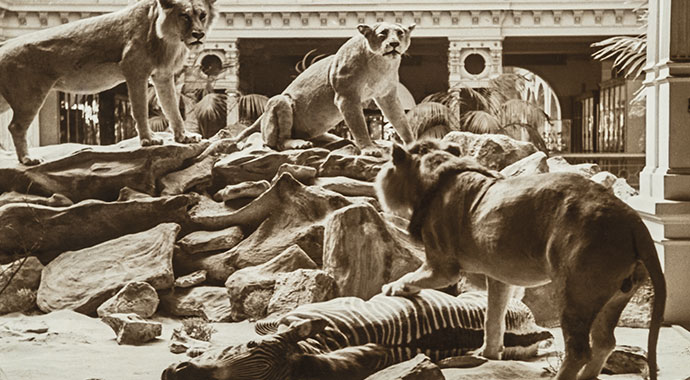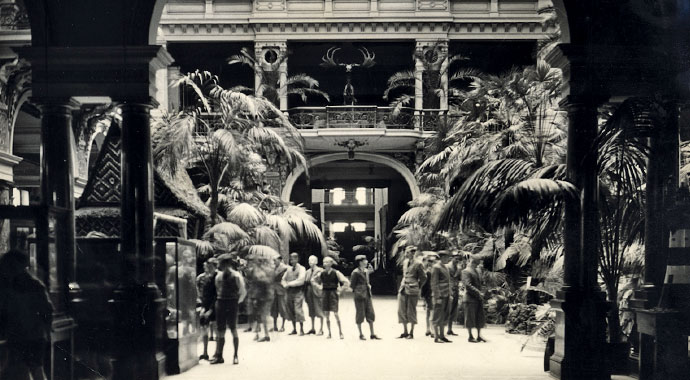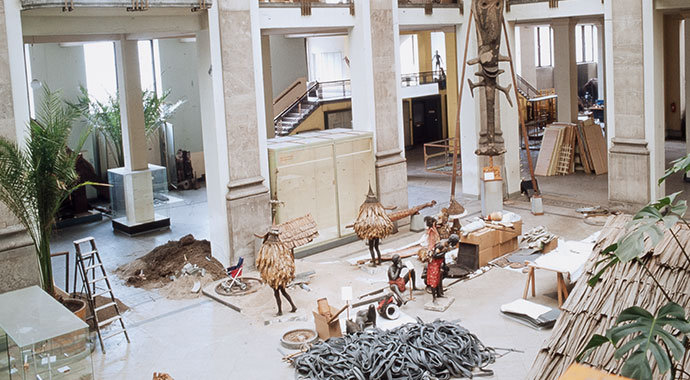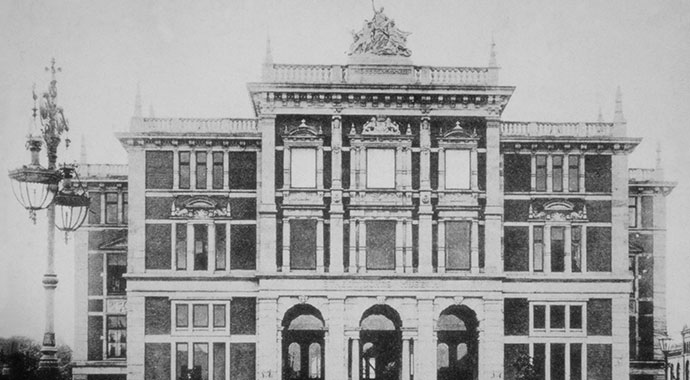Übersee-Museum first opened its doors as the “Städtische Museum für Natur -, Völker- und Handelskunde” on the 15th of January 1896. The founding director, Hugo Schauinsland, presented exhibitions that had the goal of being equally fascinating for scientists and interested laypersons, and depicted humans and animals in their natural environment for the very first time. His central theme was: “The World under one Umbrella”. The museum rapidly gained renown as a place of interest that was well-known far beyond Bremen’s borders and this still holds true to this very day.
Yet, before the museum visitors were able to gain first impressions of nature, culture or trade in and with foreign countries, a great number of Bremen citizens and businessmen, as well as the Sparkasse Bremen, were responsible for ensuring that the museum could be built in the first place, and also that it has approximately 1.2 million objects today. This is a close connection that has endured ever since and supports the museum in living up to its reputation as an educational and recreational facility with a supra-regional character – be it by collecting, preserving and researching cultural possessions and bearing witness to the fauna and flora, or by conveying information from the world of natural history, ethnology and commerce in appealing permanent and special exhibitions.
The chronological overview of the history of the Übersee-Museum can be downloaded here as a PDF:
Continual expansion, the transition to public administration and relocation – these catchphrases characterised the events surrounding the collections of the present-day Übersee-Museum prior to its founding. Regardless of whether it was the natural history collection of the “Gesellschaft Museum” or the collections of the “Anthropologische Commission”, the “Naturwissenschaftlicher Verein” or the “Historische Gesellschaft des Künstlervereins” – all institutions were in public ownership at the latest as of 1878 and were amalgamated as the “Städtische Sammlungen für Naturgeschichte und Ethnographie”.

The world under one umbrella: In 1887, the zoologist Hugo Schauinsland was named director of the „Städtischen Sammlungen für Naturgeschichte und Ethnographie“. With his vision of “the whole world under one umbrella”, he created a face for the house with new exhibition concepts. Today’s Übersee-Museum was opened on January 15, 1896 – and for the first time provided visitors with insights into the nature and culture of distant countries and continents via dioramas and display groups.

The Second World War did not leave the house and collections of the Übersee-Museum untouched. Parts of the stock could be stored in the cellar or shipped to the surrounding area. The first atrium of the Übersse-Museum, however, was completely destroyed by a bomb on December 20th, 1943. Although the Übersee-Museum was considered a “total loss” afterwards, part of the exhibitions could be reopened as early as 1949. By the mid-1950s, the museum was once again one of the city’s nationally known attractions.

Inner and outer change has characterized the history of the Übersee-Museum since the end of the 1990s. The transformation into a foundation under public law and the introduction of a board of directors and a supervisory board, as well as the opening of Europe’s first visible storage, have been followed since 2001 by a fundamental restructuring of the museum’s permanent exhibitions. The results of this are the exhibitions “Oceania – Worlds of life in the South Seas”, “Asia – Continent of Contrasts”, “Experience, what makes the world go round” and the latest permanent exhibitions “Africa” and “America”.
